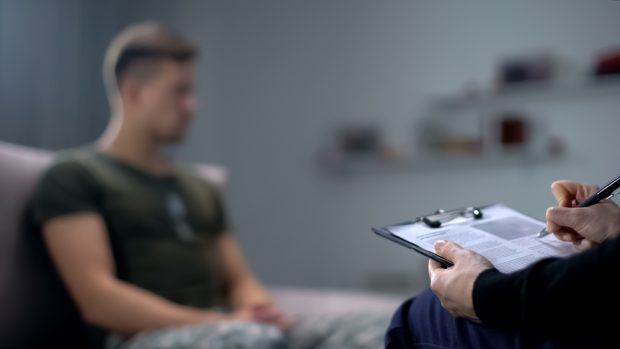Adolescence can be a challenging time for many young people. It is a time when individuals are going through significant physical, emotional, and cognitive changes. For some adolescents, these changes can lead to mental health concerns such as depression, anxiety, trauma, or substance abuse. While traditional one-on-one therapy can be effective in treating these issues, it is not always enough. For some adolescents, intensive outpatient therapy programs that include group therapy can be a powerful tool for healing.
Group therapy is a form of psychotherapy that involves a trained therapist leading a small group of individuals through therapeutic exercises and discussions. In the context of an adolescent intensive outpatient program, group therapy can be an effective way for young people to connect with others who are going through similar challenges. It can also provide a safe space for adolescent IOP programs to learn new coping skills, process their emotions, and develop supportive relationships with peers. Longevity Live Paid Content.
Understanding Group Therapy in Adolescent Intensive Outpatient Programs
Group therapy is a unique form of therapy that offers several benefits to adolescents in an intensive outpatient program. In group therapy, participants meet regularly with a therapist and other group members to discuss their thoughts and feelings. The group is typically led by a therapist who has been trained in group therapy techniques.
One of the key benefits of group therapy is that it provides adolescents with a sense of belonging. Adolescents who are struggling with mental health issues can often feel isolated and alone. By participating in a group therapy program, they are able to connect with others who are going through similar experiences. This can be particularly powerful for adolescents who feel like they don’t have anyone to talk to or who feel like no one understands what they’re going through.
Group therapy also provides adolescent IOP programs with a sense of accountability. In a group therapy program, participants are held accountable to one another. This can be particularly effective for adolescents who struggle with accountability in other areas of their lives. By working together in a group setting, adolescents can learn how to hold themselves and one another accountable, which can be a valuable skill as they move forward in their lives.
The Importance of Group Dynamics in Adolescent Intensive Outpatient Programs
Group dynamics play an important role in the success of adolescent intensive outpatient programs. Group dynamics refer to the interactions between group members. Including how they communicate, how they support one another, and how they work together to achieve common goals.
One of the key benefits of group dynamics is that they can be leveraged to improve outcomes for adolescents in therapy. For example, if a group is able to develop a strong sense of cohesion and support, group members may be more likely to hold one another accountable and push each other to grow and change. Similarly, if a group is able to develop a strong sense of trust and safety, participants may be more likely to open up and share their thoughts and feelings.
On the other hand, negative group dynamics can be detrimental to the success of an adolescent intensive outpatient program. For example, let’s say a group is dominated by one or two participants who are resistant to change. In this case, it may be difficult for other members to feel supported or motivated to make progress. Similarly, if group members do not feel safe or supported, they may be less likely to engage in the therapeutic process.
Types of Group Therapy Approaches Used in Adolescent Intensive Outpatient Programs
There are several different types of group therapy approaches that are used in adolescent intensive outpatient programs. Each approach has its own unique features and benefits. These may be more or less appropriate for different individuals and situations. Some of the most common group therapy approaches used in adolescent intensive outpatient programs include:
- Cognitive-behavioral therapy (CBT). CBT is a type of therapy that focuses on helping individuals identify and change negative thought patterns and behaviors. In a group setting, participants may work together to identify common negative patterns and support each other in implementing positive changes.
- Dialectical behavior therapy (DBT). DBT is a type of therapy that focuses on teaching individuals new coping skills and strategies to manage difficult emotions. In a group setting, participants may learn these skills together and provide support and accountability to one another.
- Interpersonal therapy (IPT). IPT is a type of therapy that focuses on improving communication and relationship skills. In a group setting, participants may work together to practice communication skills and support each other in building healthier relationships.
- Support groups. Support groups are groups of individuals who come together to share their experiences and provide emotional support to one another. In an adolescent intensive outpatient program, support groups may focus on specific issues such as substance abuse, trauma, or depression.
The Role of the Therapist in Group Therapy
The therapist plays a crucial role in facilitating group therapy in an adolescent intensive outpatient program. The therapist’s role is to create a safe and supportive environment, help group members build relationships with one another, and guide the group through therapeutic exercises and discussions.
One of the most important skills that a therapist must have when leading a group therapy program is the ability to manage group dynamics. The therapist must be able to recognize when negative dynamics are emerging and take steps to address them. This may involve redirecting conversations, encouraging participation from quieter group members, or addressing problematic behavior.
The therapist must be able to create a sense of safety and trust within the group. This may involve establishing clear boundaries, encouraging open communication, and modeling healthy relationship behaviors.

Motortion Films/Shutterstock
Conclusion
Adolescent intensive outpatient programs that include group therapy can be a powerful tool for helping young people overcome mental health issues. Group therapy provides adolescents with a sense of belonging and accountability, and can be an effective way for them to learn new coping skills and process their emotions. To be successful, group therapy programs must have positive group dynamics, and therapists must be skilled in managing these dynamics and creating a safe and supportive environment for group members. By leveraging the power of group therapy, adolescent intensive outpatient programs can help young people build healthy relationships, improve their mental health, and achieve long-term success.
Who is the author?

Waqar Azeem
Waqar Azeem is a freelance writer with one year of experience in writing health therapy blogs. He is passionate about helping people lead healthy lives through informative and engaging content. In his free time, he enjoys exploring new health trends and experimenting with healthy recipes.



![women [longevity live]](https://longevitylive.com/wp-content/uploads/2020/01/photo-of-women-walking-down-the-street-1116984-100x100.jpg)










